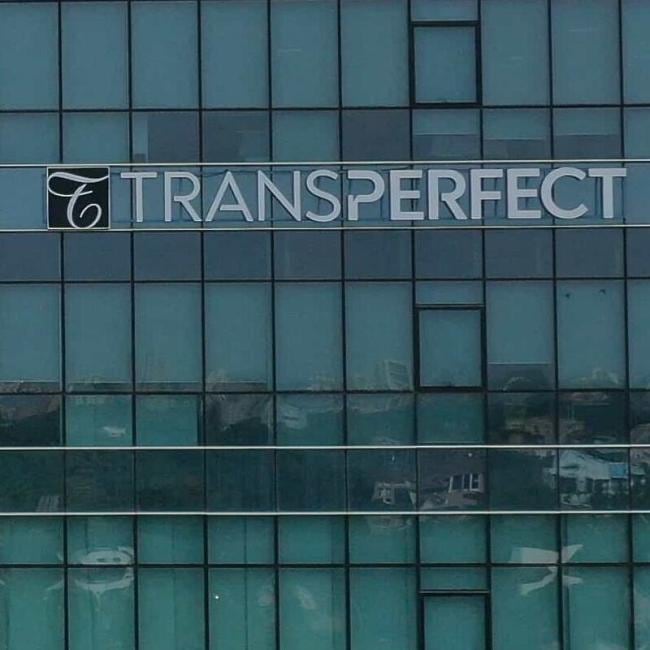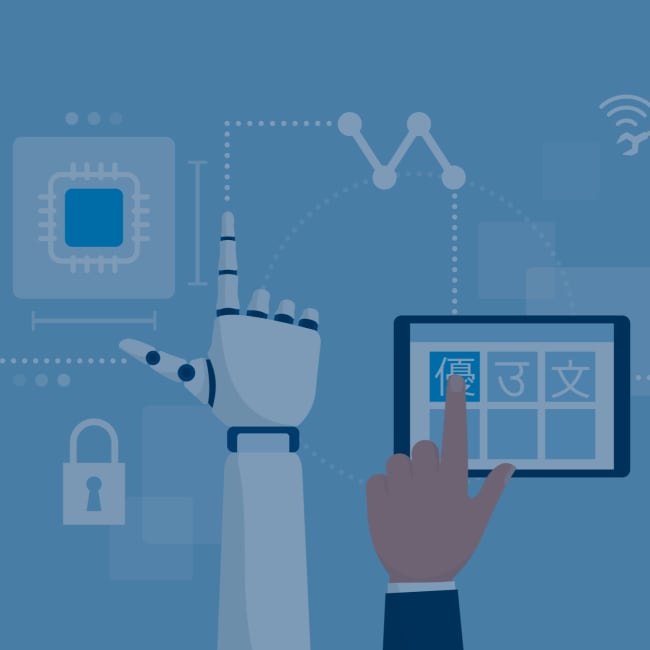How Is a CCMS Different From a Help System?


Comprehensive help documentation often makes the difference between a good product and a great one. However, building a compelling ecosystem of help for each product becomes time-consuming and confusing. The more products and unique specifications you’re working with, the more you have to keep organized and up-to-date.
For a technical writer, keeping track of updates, revisions, and repurposed content serves as a distraction from producing quality content. In the past, there was no option but to have someone manually keeping things organized. Today, we have a variety of tools to create multiple help formats and keep them organized.
Component content management systems (CCMS) and help authoring tools (HAT) are the most common tools of the trade, but do you need a CCMS or a HAT?
What Is a Help System or Help Authoring Tool?
A help authoring tool combines a word processor with a suite of tools designed to facilitate the content publishing process. HATs help authors build the help system and publish it for deployment on a website or delivery with a product.
Writing the help documentation is often the most straightforward part of the process for technical writers. The hard part comes when it’s time to format the content for delivery across multiple formats. For example, formatting content for static web pages is simple enough, but a single format will not reach the full range of customers for any given product. Adapting help content for dynamic online and mobile formats can quickly cause a headache.
The typical features of a HAT include editors for keywords, topics, and tables of contents. A media library helps keep track of all the images, videos, and other media which make help content shine. The idea is to bring together all the tools you would need separately.
Some authors balk at the idea of using a HAT because they believe all HATs produce content that looks the same. This may have been the case 10 or more years ago, but today’s HATs give authors a significant amount of control over the content's final appearance.
The best HATs give you access to the source code for every template, so with the proper know-how, anyone on the content team can fully control the content design. Source code access allows you to tweak the look of each format to best suit its delivery medium. If you’re repurposing content for mobile web and find the given template has too many photos or too small a font, you can alter that at the source.

What Is a CCMS?
A component content management system builds out the functionality present in HATs and adds multiple features that make HATs seem obsolete. Like a HAT, a CCMS serves as a repository and management system for your content. The main difference between a CCMS and a HATis the level at which you control that content.
Instead of a local file system, a CCMS relies on a database for organization, storage, and retrieval. In a database, you can manage content at the granular level because information is broken down beyond topics to even smaller components. Rather than copying material into new files, a database allows you to pull information at the sub-topic level and use it to build your help documentation.
In addition to detailed control of your content, a CCMS provides “referential integrity.” In other words, your CCMS knows how each piece of content relates to the other pieces around it. It tracks full text, metadata, and variables along with dependencies between individual objects.
A good CCMS also provides administrative tools that are invaluable to companies with decentralized subject matter experts (SMEs) and content creators. This type of system can track the status of content through the creation process to ensure you know who did what and when. Some CCMS programs have scheduling and project planning functions for a full-service content management experience. Essentially, a CCMS is everything you dreamed a HAT could be.
File System vs. Database
Let’s examine why the database format used in a CCMS blows a HAT out of the water. Consider how you organize files on your computer. For a particular batch of help content on a specific set of products, you likely have a multitude of folders separated out by format, version, media type, and many other variables.
No matter how organized the files on your machine are, they don’t do the rest of your team any good because they’re stored where others can’t access them. This is the fundamental problem with the file system and doesn’t even begin to cover what happens when multiple people make multiple updates to multiple versions.
The CCMS was designed to move the file system online, so everyone works off of the same central piece of content. This “single source of truth” eliminates the issue of people working on newly-redundant versions of the same content. Single-sourcing is key to scaling and reusing content effectively.
When using a HAT with a file system, you’ll still waste a lot of time doing a lot of copying and pasting when it’s time to repurpose content. You also have no reliable way of knowing which content has already been repurposed and where without detailed manual tracking.
Controlling Your Components
With a CCMS, your content is labeled with a database ID rather than a file name. And rather than storing whole files full of text, imagery, and more, the database breaks content components all the way down to individual words. Each component contains crucial information including the owner and version. More importantly, a database knows how each granular content object relates to others.
Without file names to worry about, you and your team are free to move things around and update resources. Since the CCMS keeps track of database IDs for you, you can always find where each component has been used. As your company rolls out new products or features and you reuse more and more content, the link management your CCMS provides will save more significant amounts of time.

When working to reuse content, a CCMS lets you take a modular building approach. You can quickly locate and repurpose everything from full documents to single sentences or phrases to build new content with ease.
Content Model: HTML vs. XML
The content model you use determines the structure of your documentation. You work from a template to structure how the content looks. Your content model dictates the look of paragraphs, tables, images, and other components.
Most HATs rely on HTML, although some use a modified version such as XHTML to get the job done. You may see some HATs claiming to use XML, but that claim is not always accurate. CCMS applications usually use a version of XML.
1. Drawbacks to HTML
Although HTML is familiar to more people, it has some quirks that make it less than suitable for use in content management. HTML operates without the logic-based structure that underpins XML and can lead to some messy formations. Outside of high-level sections like title tags, a lack of consistency may become a problem.
Most CCMS and HAT tools have an editor that shows you what your markup code will look like in the final product. This is undoubtedly helpful, but with HTML, you can use multiple approaches to come up with the same appearance. Nothing stops different users from creating content that doesn’t mesh structurally, which makes scalability challenging to achieve.
2. The Benefits of XML
The structure of XML actively helps users create valid, matching content thanks to a defined set of rules. If there’s a case mismatch or an open tag in XML, the code won’t work—unlike in HTML where mistakes of that nature can still be valid. The predictability and consistency of XML are ideal for content that will pass through many hands on its way to publication.
XML content allows you to see the definition of each element and doesn’t combine style elements with content. That way, writers don’t have to worry about the appearance of the content. Content structured with XML is more easily adapted into a variety of formats and capable of supporting multiple languages.
Improving Workflow
A valuable difference between a CCMS and a HAT is the ability to manage workflow. A company may be working with top talent around the world, and keeping track of each employee’s contributions is no easy feat. You may be able to use a third-party app or software and make it work with your HAT system, but having project management seamlessly integrated into a CCMS takes a significant amount of headache off the table.
The most common third-party tools target software developers, not technical writers. Developers have less need to collaborate, and their tools offer an editing model that could lead to disastrous consequences when used by content creators. “Conflict resolution” allows two people to work on one file simultaneously. If there are conflicts between the edits, users have to resolve them upon saving.
For a technical writer, this could potentially mean the complete loss of significant chunks of work at the click of a button. On an enterprise level, it can result in frustrating amounts of time and good content wasted.
1. Smarter Version Control
To keep things simple and avoid the distress of change conflicts, a good CCMS will use a more writer-friendly process. It works somewhat like checking out a book from the library. Once you’ve checked it out, no one else can read it.
In a CCMS where each topic only exists once, a check-out strategy locks everyone out of the topic except the user editing it. Preventing conflicts altogether is just one of the ways a CCMS caters specifically to an authoring environment.

2. Clear Life Cycle
With a CCMS, you’ll always know where each piece of content is in the development cycle. Keep track of every stage from drafting to review. With a centralized workflow available to each user, there’s no chance of accidentally missing a deadline.
Technical writers appreciate the ability to roll back revisions and easily update workflow status. It reduces the time spent finding and eliminating old versions and allows them to get back to the business of writing. For management, the centralized workflow promotes transparency and a more hands-off approach.
Enhancing Collaboration
A CCMS keeps everyone on the same page — literally. The beauty of a single-source platform is that only one copy of a document will ever exist, and users see every edit that happens. There’s no chance of working off of an obsolete version because there are no files to worry about.
With a HAT, the file system bogs down what could otherwise be a speedy revision process. A reviewer would need to make comments or updates, save the file under a new name, and shuffle it back to the writer for edits. Then, the cycle would begin again. With a CCMS, the writer can watch the review as it progresses to speed up the process.
Collaboration without confusion is something many content departments struggle to achieve, and it only gets harder as the pool of team members and products increases. Removing the distractions of collaborating with a file system frees up employees to get more done.
Simplifying Translation
Translation presents several unique challenges that a HAT can’t handle due to its file-based system. The primary problem most businesses face is redundancy in translations. When a user updates content, even very slightly, that content becomes a new version with a new file name. When it’s time to translate the content, the whole file gets translated again. After all, there’s no surefire way to tell which part of the content is new when relying on a file system.
With a CCMS, duplicate files don’t clutter up the translation process. After a component has been translated once, there’s a record of it forever. You know exactly what has been translated, and the CCMS prevents you from ordering translations of old material.
In an organization with materials in multiple languages, the automation a CCMS offers may wipe out the single most significant cause of resource waste. And, of course, scalability is almost infinite.
Do I Need a CCMS or a Help System?
When it comes to CCMS vs. HAT, it’s clear that a CCMS is the more robust content management system. However, “Do I need a CCMS or a HAT?” is not necessarily the question to ask. Many organizations use both. There are plenty of decent HATs out there, and some are even free. If you’re an independent technical writer or a fledgling business, that may be enough to get by.
You have to ask yourself two questions.
First, how much time are you willing and able to spend maintaining the organization and integrity of your file system? If you use a HAT now, take the time to calculate just how many hours you or your team spend chasing down the correct version of a file or the time lost when someone finds out they were working on an outdated content file. It’s likely more than you think.
Second, do you expect your business to grow? If so, why stick with a system you know isn’t scalable? The more your business grows, the faster a CCMS pays for itself.
It's not always an either-or scenario. A significant advantage of a CCMS is that you can use it in conjunction with HATs you already have in place. The versatility of a CCMS makes it an effective standalone system or an adaptable addition to enhance your current tools.
Choose Vasont Systems for CCMS Success
Vasont Systems is the world’s leading provider of CCMS solutions and support. We developed the web-based Vasont® Inspire to be intuitive and easy to use while delivering cutting-edge features you won’t find anywhere else.
Vasont Inspire is XML-based and accessible from anywhere in the world at any time. Facilitate a smooth workflow with real-time collaborative capabilities, and keep your content secure with single sign-on technology. From project management to reporting, Vasont Inspire makes content publishing easy and efficient.

If you’re ready to take the next steps to level up your content management system, Vasont Systems is here to help. Don’t hesitate to reach out and learn more about Vasont Inspire and how a CCMS can revolutionize your help content creation process.


